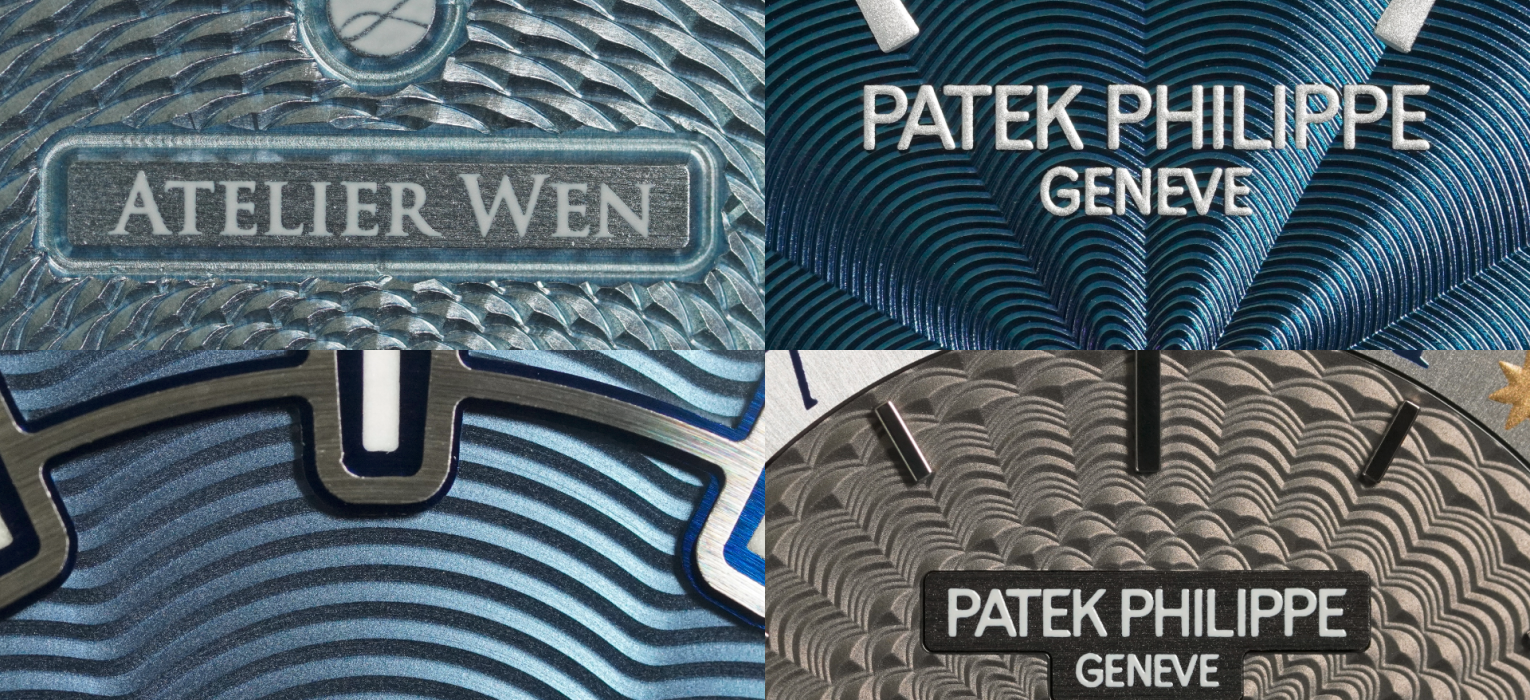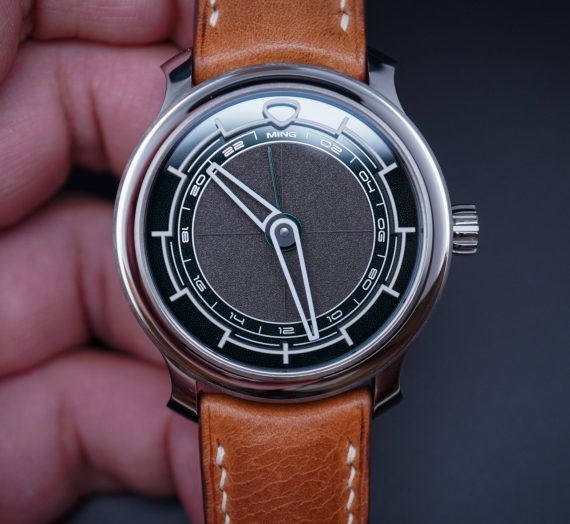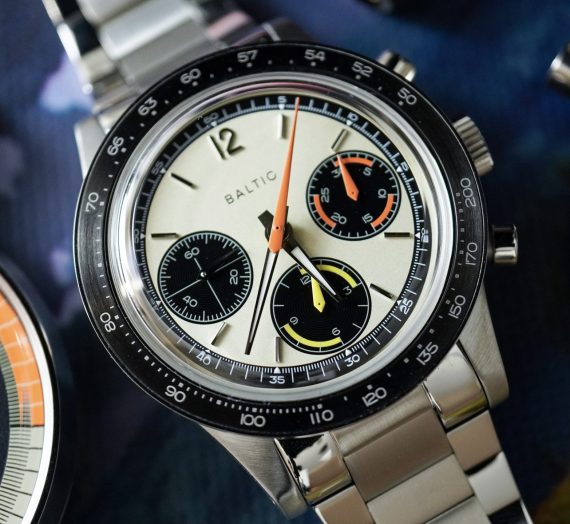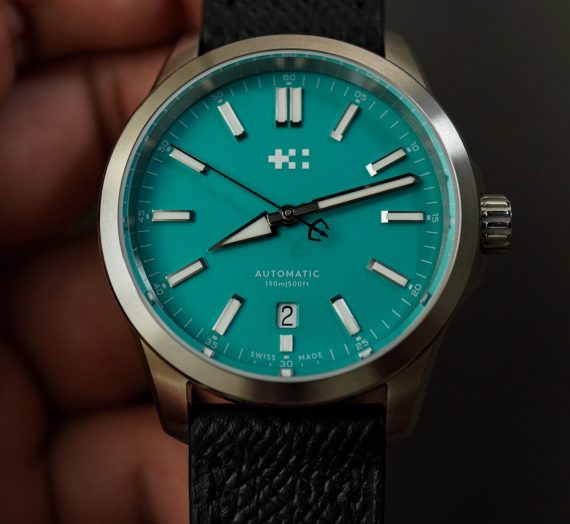Disclaimer: this video/review was not sponsored by Patek Philippe, Sarpaneva, Atelier Wen or any other entity.
Video
Guilloché
The rise in popularity of patterned watch dials, including guilloché styles, spans a broad spectrum of brands, ranging from $300 micro-brands to multi million-dollar high horology houses. The term “guilloché” is often used with a degree of ambiguity – I believe that this is done intentionally in many cases, and carelessly in others. This ambiguity sometimes leads consumers to believe these dials are crafted using traditional methods, such as being hand-turned on a rose engine, which is what many might envision when they hear “guilloché“. However, the reality is that many of these dials are produced through less artisanal means, such as stamping patterns onto metal substrates or CNC machining, which also mimics the appearance of classic engine turning.
Below are a few of the patterned dial watches I’ve photographed and reviewed over the last few years, ranging from as low as $400 in the case of the Second Hour Memoir and Dumoreau DM01 with stamped dials. Perhaps most notable in this set is the handmade guilloché dial of the Chronoswiss Flying Regulator Pink Panther which has a retail price of roughly $12000 USD.
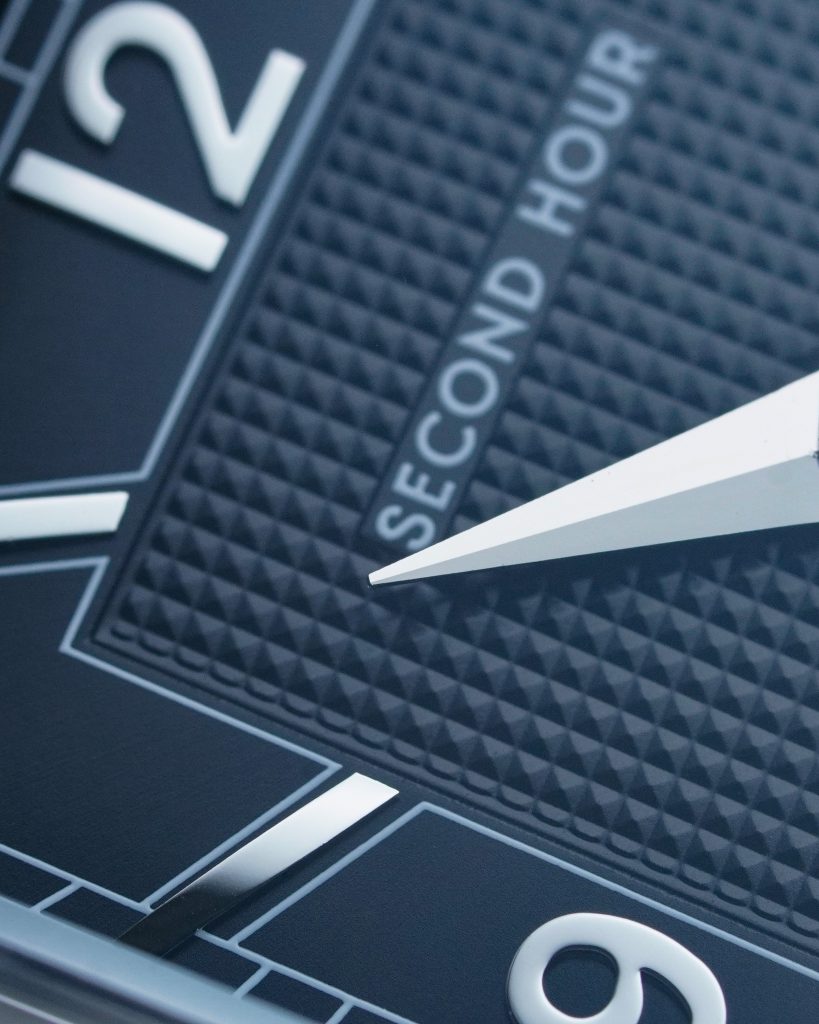
$400 : Stamped Dial

$12000 : Handmade Guilloché
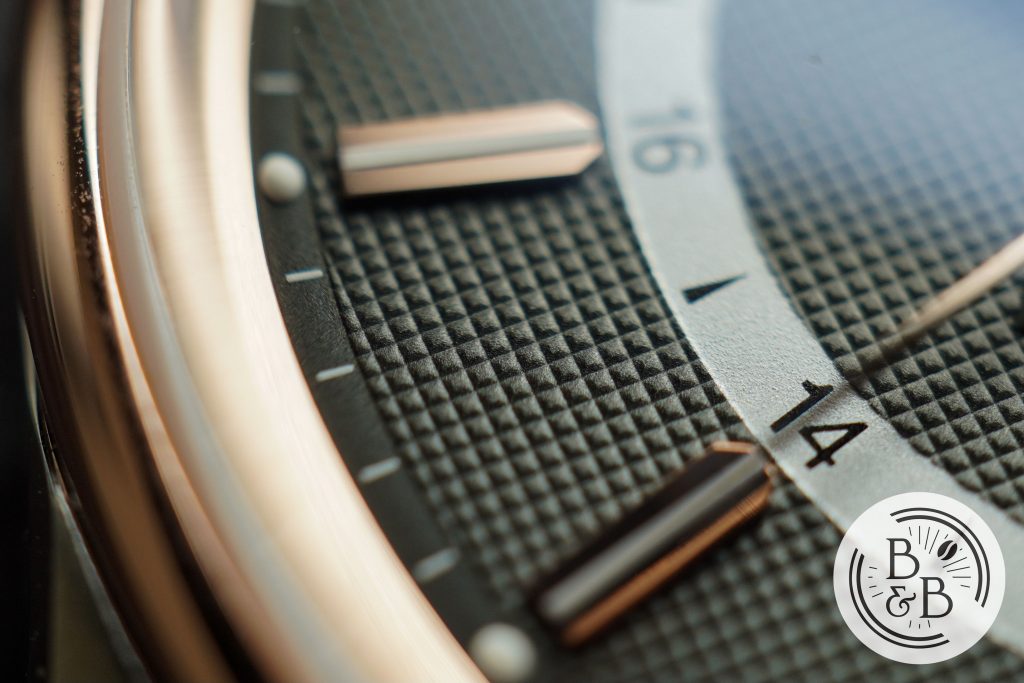
$2000 USD : Stamped Dial
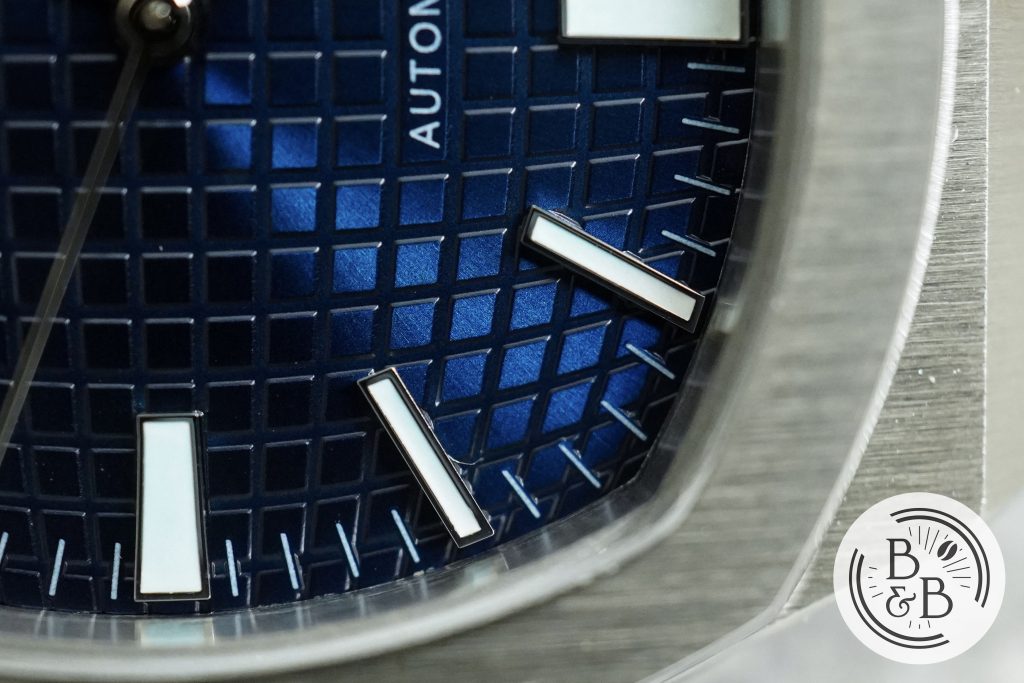
$400 : Stamped Dial
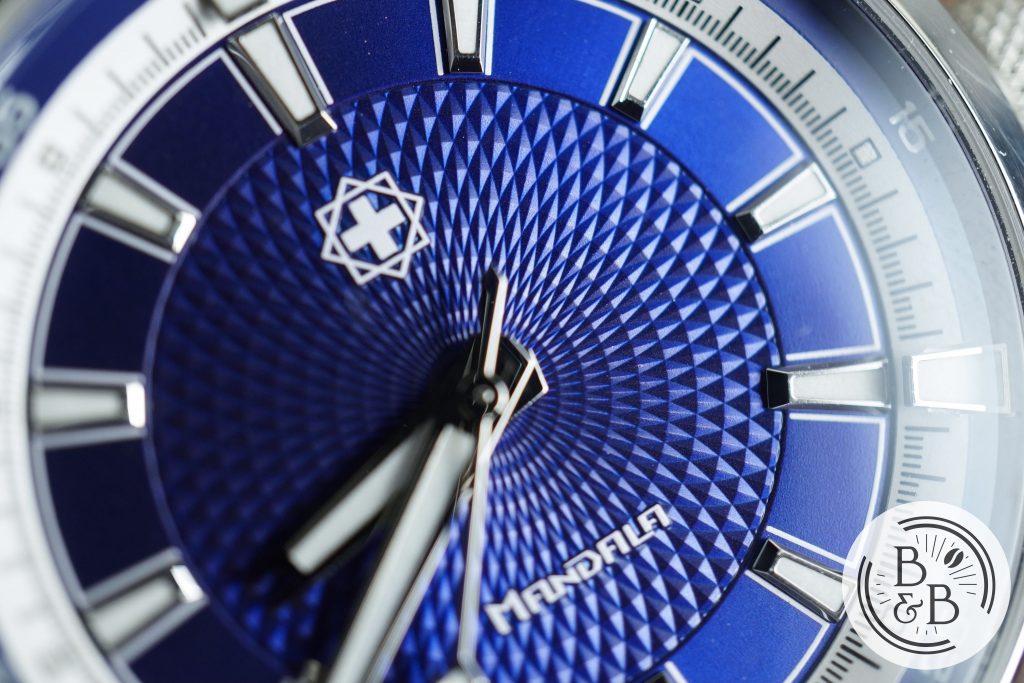
$450 : Stamped Dial
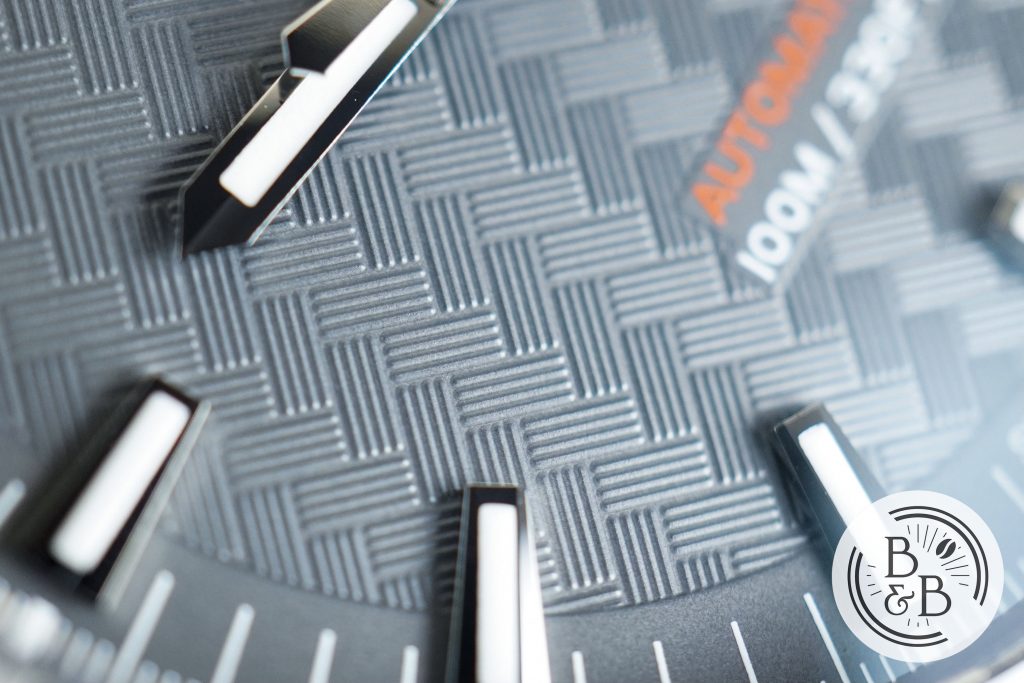
$2100 USD : Stamped Dial
Despite understanding the different production processes, appreciating the nuanced differences in the resulting dials wasn’t clear to me until I had simultaneous access to a diverse collection of watches with these dials (and also a few years of experience photographing some of the more higher end examples like this Gronefeld Remontoire 1941 with a striking handmade guilloché dial made by Kari Voutilainen’s Comblemine company).




But today is about neither of these watches. Today will be a comparison of some pieces I currently have access to that allowed for a direct visual comparison, and an exploration into the sometimes vague language used by manufacturers – particularly those manufacturers included here. In this article, I wish to compare dials from several watches, including the hand-turned dial of the Atelier Wen Perception “Piao”, the CNC engraved dial of the Sarpaneva K3 Guilloché, and the stamped and hand-turned guilloché dials of the Patek Philippe 4997/200G-001 and Patek Philippe 5230G, respectively. These models represent a range of techniques and are priced from $3,200 to around $47,500, offering a broad perspective on the craft behind patterned dials.
Ateler Wen Perception ‘Piao’
I recently published a detailed review of the Atelier Wen Perception “Piao”, but I’ll go over some of the more relevant details here. This watch is most notable for its hand-turned guilloché dial, and there are several critical aspects to highlight. Priced at around $3,200 USD, it stands as the most affordable option in this comparison, but it’s also worth noting that there are even less expensive watches with stamped and CNC dials below the $500 and $1000 marks from brands like Second Hour (Memoir, Mandala) and Zelos (Nova 37mm) respectively. The “Piao” features the craftsmanship of Cheng Yucai, China’s only master guillocheur, who is self-taught and crafted his own interpretation of a rose engine. His work was eventually showcased by Atelier Wen, bringing his intricate dials to a broader audience.




Atelier Wen is transparent about the origins and craftsmanship of their watches, openly sharing details about the components and their sources. They consistently demonstrate the hand-turning process through extensive video documentation and even highlighted Cheng Yucai’s skills live during Watches & Wonders, with his self-built guilloché machine, offering a unique interaction with his artistry.


However, when compared to the guilloché work by industry titans like Kari Voutilainen or Breguet, the “Piao” does show a degree of imperfection. While it may not reach the same heights of finesse, aligning more closely with the works of Chronoswiss and Jochen Benzinger, these imperfections grant the dial a distinctive character and beauty that is both appreciated and celebrated, especially at this price point. As of now, this watch likely represents the most accessible hand-turned rose engine dial on the market (perhaps the closest alternatives are from brands like RGM and Jaeger & Benzinger), with alternatives mainly found in the realm of pre-owned or secondary market pieces.
Sarpaneva K3 Guilloché
The next watch in the spotlight is my customized variant of the K3 Guilloche from Sarpaneva. Priced at around $24,000 USD on bracelet, it is significantly more expensive than the previously discussed Atelier Wen Perception. The dial, crafted by Comblemine SA – a company owned by Kari Voutilainen – is produced through CNC engraving, a detail not clearly stated on the Sarpaneva website that simply says “Guilloché dial in Pink, by Comblémine” in the case of the K3 Northern Stars Guilloche that was recently available. Initially, I was informed that the dial was hand-turned but it was in fact a CNC engraved dial, a misunderstanding that only came to light upon receiving the watch. Despite this, Sarpaneva’s response was commendable, offering a full refund and return for the oversight, which I declined because of how much I love the end result. Although I would’ve preferred this information be relayed to me correctly prior to purchase, and more accurately mentioned on the website in general.




Visually, the K3 Guilloché dial looks magnificent in person, with no detectable flaws even under a macro lens. The impeccable execution of the CNC guilloché pattern showcases the high quality of work produced by Comblemine.
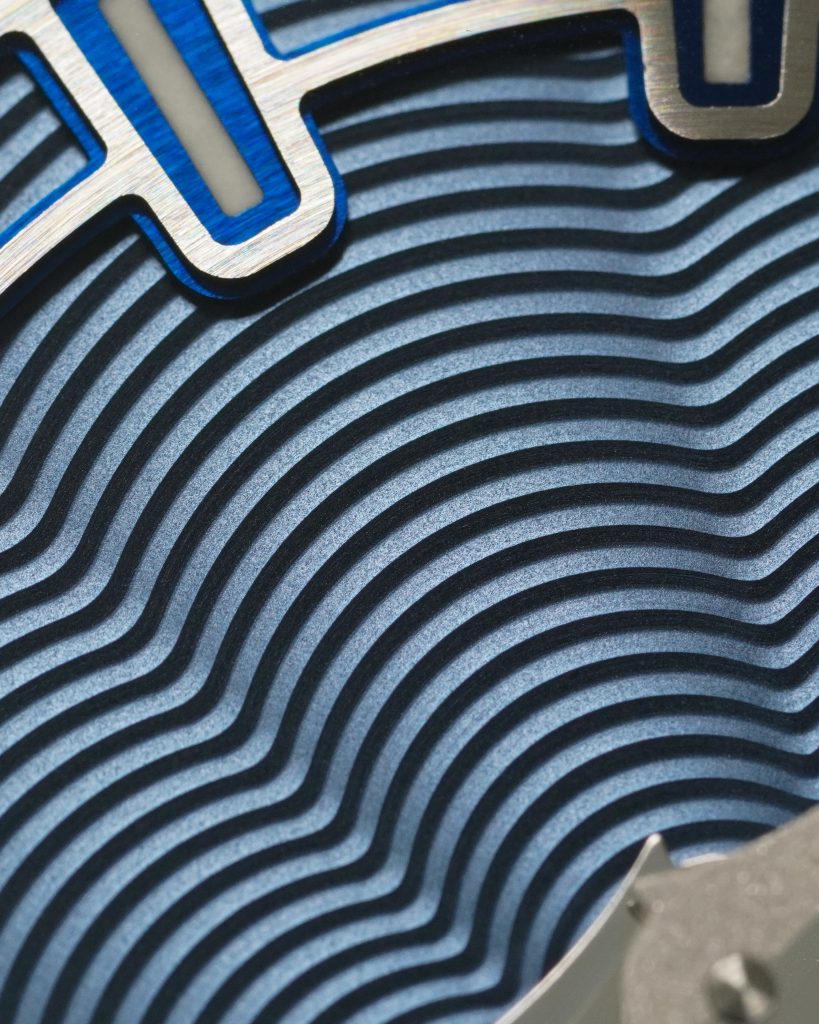
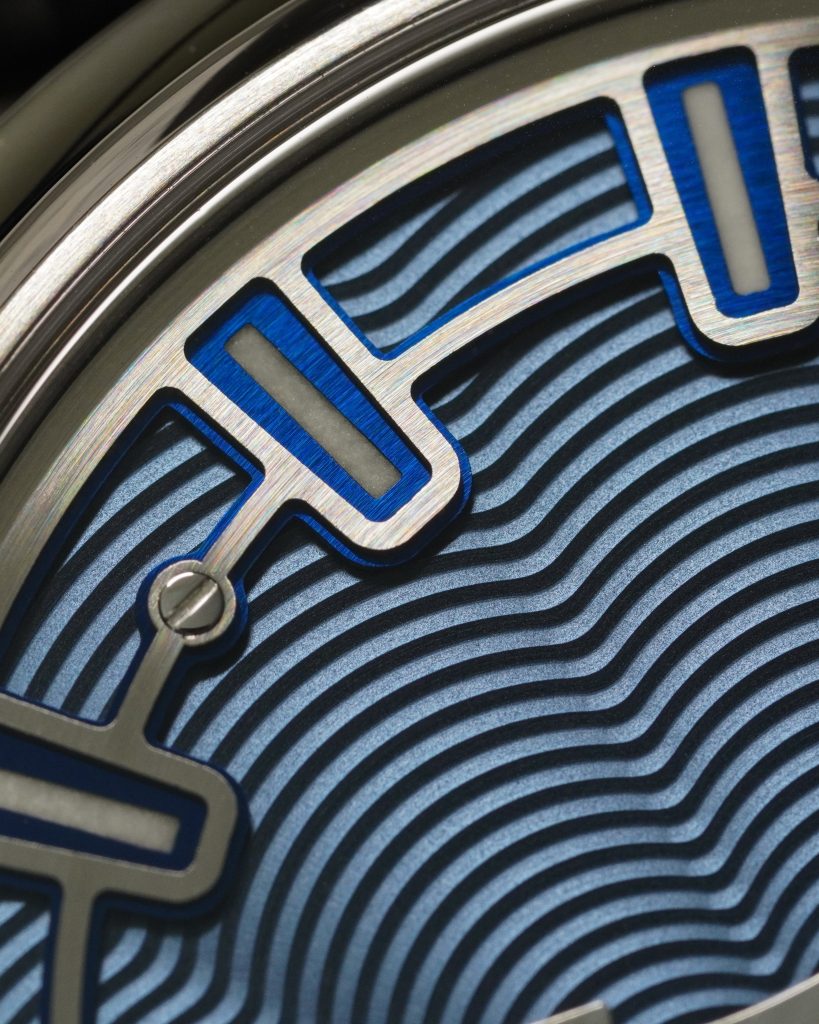
This model is perhaps among the pricier CNC guilloché dial watches on the market, contrasting sharply with more affordable options like those from Sartory Billard (who also uses Comblemine SA for his guilloché dials) or the Zelos (like the latest Nova 37mm), which also feature CNC guilloché dial options under the $10,000 and $1000 price ranges respectively. An interesting observation is that both Sartory Billard and Zelos clearly communicate this information with Zelos stating “‘Grain de Riz’ CNC Guilloche with fumé Salmon dial” and Sartory Billard giving you options for CNC or hand turned guilloché dials based on your budget and requirements.
Patek Philippe 4997/200G-001
The Patek Philippe 4997/200G-001 Ladies Calatrava features a striking blue dial that initially caught my attention for its supposed handcrafted qualities. When it was introduced in 2021, Patek Philippe’s marketing materials (April 12, 2021 Press Release) described it using terminology typically reserved for handmade guilloche dials, like:
“The Calatrava ladies’ model with a guilloched, blue lacquered dial has a slightly larger case and now accommodates a self-winding movement (Ref. 4997/200G-001).”
“The precious dial requires considerable work and artisanship. Its base is exquisitely guilloched with concentric waves and then coated with consecutive layers of a translucent night blue lacquer.”
However, after a few years on the market, the brand revised its description on their website to now indicate that the dial is actually “embossed” with a concentric wave pattern, finished with a layer of lacquer. But such language was entirely absent during its release in 2021.




This shift in language is somewhat disheartening, especially considering the watch’s high price point and Patek Philippe’s prestigious reputation. Despite this, the dial’s visual impact is undeniable; the combination of the pattern, color, and lacquer gives it a mesmerizing quality unmatched by others in this comparison (even the stunning watch we’ll look at next). Observing minor imperfections and irregularities in the dial’s lines led me to initially suspect that it might be CNC or handmade guilloche. However, upon directly confirming with Patek Philippe, they reassured that the dial is embossed, not handcrafted.



This revelation is particularly significant for a relatively simple watch priced at nearly $39,000 USD to feature a stamped pattern. From a brand celebrated for its craftsmanship, the use of embossed dials at such a premium is questionable, casting a shadow over what is otherwise an aesthetically beautiful piece.
Patek Philippe 5230G
The Patek Philippe 5230G World Time marks the finale of this series, distinguished by its meticulously handcrafted guilloche dial featuring a complex basket weave pattern. Introduced in 2016, Patek Philippe’s communication about this watch’s dial was transparent and detailed, clearly stating its handmade nature and emphasizing the challenges involved in creating such intricate guilloche work.
“
“Then, it also means the centers of World Time watch dials that are perfect stages for traditional forms
of craftsmanship. Patek Philippe World Time watches decorated with polychrome cloisonné enamel maps on their dials are nothing short of legendary. The centers of other World Time watches feature hand guilloched decors, like the black dial center of the new Ref. 5230 with its filigreed woven pattern. The inspiration for this guilloched basket weave motif was taken from a precious pocket watch on display at the Patek Philippe Museum,…”
“For example, the manually controlled rose engine needed to guilloche dials is almost one hundred years old. But it has been constantly serviced and works as reliably today as when it was first commissioned.”
Unlike the Patek 4997, there is no explicit mention of a coating on the guilloche; however, my macro photography suggests a possible transparent lacquer application, which seems to slightly flatten the apparent texture, making it less pronounced compared to the raw guilloche observed in other watches.




Visually, the dial is truly spectacular, with the basket weave pattern displaying a level of precision and artistry that surpasses other watches in this comparison. This perfection made me question its creation – whether purely handmade or assisted by pressing or CNC techniques, which I’ve been told is extraordinarily difficult for such a design. Given Patek Philippe’s reputation for excellence in rare handcrafts, the quality of this dial aligns with the brand’s high standards. Reflecting its elaborate craftsmanship, the watch carries a price tag that underscores the expectation of supreme execution in every detail, and in this instance, the 5230G most certainly delivers.
Wrapping Up
Writing this article wasn’t about unmasking faults in any specific watch or promoting one above another. My aim was to simply explore the diverse array of patterned dials available in the watch market, offering insights into the intricate craft behind each and the potential pitfalls in how they are marketed. The language used to describe these dials often obscures the true nature of their creation—a craft that demands extensive training and considerable effort to master, particularly to achieve flawless results.
I also write this as an open letter to watch brands to be more transparent about what they’re offering – it does nobody favors when ambiguous language is used to sell a product. You might sell watches to the temporarily ignorant or uninformed. Ignorance, though, is easily overcome but a lost reputation is hard to revive.
As I continue to navigate the fascinating realms of both artisanal and industrial dial making, I look forward to sharing more discoveries and insights. I hope you find as much enjoyment and value in reading these explorations as I do in creating them.

